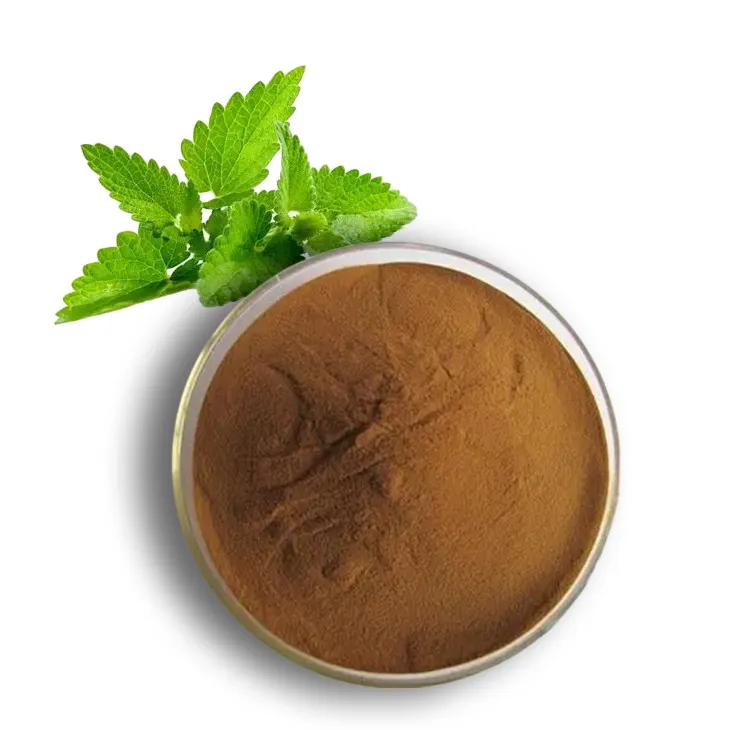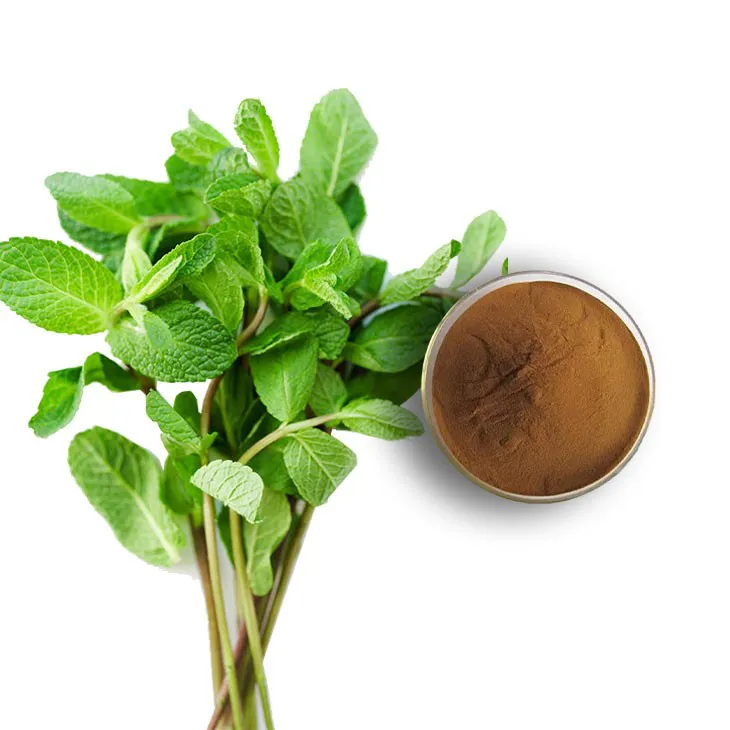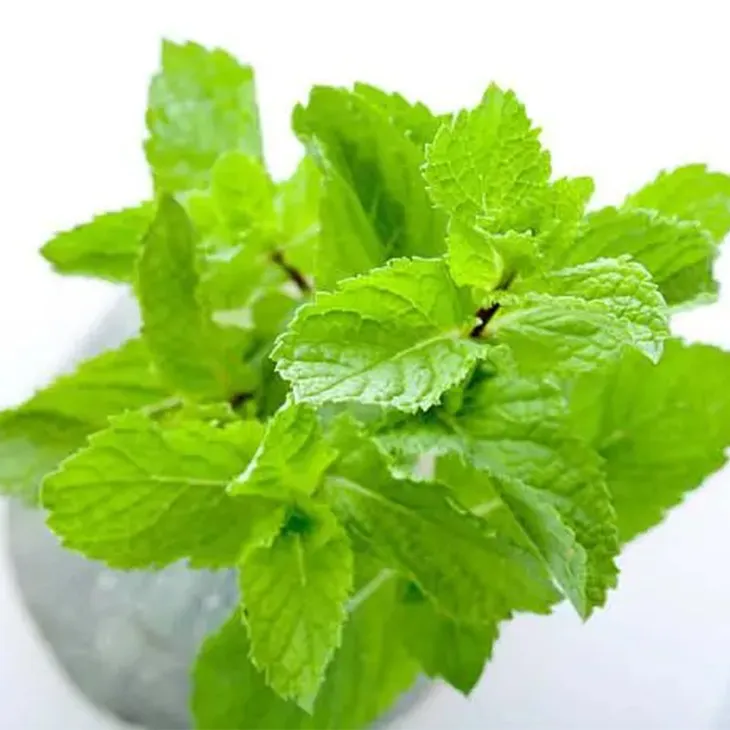- 0086-571-85302990
- sales@greenskybio.com
The Essence of Mint: Exploring the Botanical Origin and Composition of Peppermint Extract Powder
2024-07-04

1. Introduction
Peppermint is one of the most well - known and widely used herbs in the world. Its refreshing aroma and taste have made it a popular ingredient in various products, from food and beverages to cosmetics and pharmaceuticals. Peppermint Extract Powder, in particular, has gained significant attention due to its concentrated form and ease of use. This article aims to delve deep into the botanical origin and composition of Peppermint Extract Powder, uncovering the secrets behind this versatile and beloved herb.

2. Botanical Origin of Peppermint
2.1 Taxonomy
Peppermint is a hybrid plant, a cross between watermint (Mentha aquatica) and spearmint (Mentha spicata). Its scientific name is Mentha × piperita. This hybridization has given peppermint its unique set of characteristics that distinguish it from its parent plants.
2.2 Natural Habitat
Peppermint is native to Europe and Asia. It thrives in moist, shaded areas such as riverbanks, wetlands, and the edges of forests. The plant prefers well - drained soil with a slightly acidic to neutral pH. In its natural habitat, peppermint can form dense colonies, spreading through underground rhizomes. This vegetative propagation allows it to cover large areas and compete with other plants for resources.
2.3 Cultivation
Today, peppermint is widely cultivated around the world. Major producers include the United States, India, and China.- Cultivation requires careful attention to soil conditions. The soil should be rich in organic matter and have good water - holding capacity.
- Peppermint plants are typically propagated through cuttings or by dividing the rhizomes. This ensures that the new plants retain the desirable characteristics of the parent plant.
- During the growing season, the plants need regular watering, especially during dry periods. However, over - watering can lead to root rot, so proper drainage is essential.
- Harvesting usually takes place when the plants are in full bloom. The above - ground parts of the plant are cut and dried for further processing.

3. Composition of Peppermint Extract Powder
3.1 Volatile Oils
The most characteristic and important component of peppermint extract powder is its volatile oils. These oils are responsible for the plant's characteristic aroma and many of its therapeutic properties. The main volatile oil in peppermint is menthol, which can make up to 40 - 50% of the total volatile oil content. Menthol has a cooling and refreshing effect on the skin and mucous membranes, which is why peppermint is often used in products like cough drops and topical analgesics.- Other important volatile oils in peppermint include menthone, which has a slightly minty but less cooling effect than menthol. It also contributes to the overall aroma of peppermint.
- Limonene is another component of peppermint volatile oils. It has a citrus - like aroma and may play a role in the plant's antioxidant and antimicrobial properties.
- Pinene, which is also found in pine trees, is present in peppermint volatile oils. It may contribute to the plant's anti - inflammatory properties.
3.2 Polyphenols
Peppermint extract powder also contains polyphenols, which are a group of compounds known for their antioxidant properties.- One of the main polyphenols in peppermint is rosmarinic acid. It has been shown to have anti - inflammatory, antioxidant, and antiviral properties. Rosmarinic acid may help protect the body against oxidative stress and inflammation, which are associated with many chronic diseases.
- Flavonoids are another type of polyphenol found in peppermint. These compounds have various health - promoting effects, such as improving blood circulation and reducing the risk of heart disease.
3.3 Other Components
In addition to volatile oils and polyphenols, peppermint extract powder contains other substances.- It contains various minerals such as potassium, calcium, and magnesium. These minerals are essential for normal physiological functions in the body, such as muscle contraction, nerve transmission, and bone health.
- Peppermint also contains vitamins, although in relatively small amounts. Vitamin C, for example, is an antioxidant that helps boost the immune system and protect cells from damage.
- There are also some amino acids present in peppermint extract powder. Amino acids are the building blocks of proteins and are necessary for growth, repair, and maintenance of body tissues.

4. Applications of Peppermint Extract Powder
4.1 Food and Beverage Industry
Peppermint extract powder is widely used in the food and beverage industry.- In confectionery, it is used to flavor candies, chocolates, and chewing gums. The refreshing taste of peppermint adds a pleasant flavor to these products.
- It is also used in beverages such as tea, coffee, and soft drinks. Peppermint tea, in particular, is a popular herbal tea known for its digestive and calming properties.
- In the baking industry, peppermint extract powder can be added to cakes, cookies, and pastries to give them a unique flavor.
4.2 Cosmetics and Skincare
Due to its cooling and refreshing properties, peppermint extract powder has numerous applications in cosmetics and skincare.- It is used in facial cleansers, toners, and moisturizers. The menthol in peppermint can give a cooling sensation on the skin, which is especially refreshing in hot weather or after exercise.
- Peppermint extract powder is also used in haircare products. It can help soothe an itchy scalp and give the hair a fresh, clean smell.
- Some lip balms contain peppermint extract powder for its moisturizing and cooling effects on the lips.
4.3 Pharmaceutical and Medicinal Uses
Peppermint has a long history of medicinal use, and peppermint extract powder continues to be used in modern medicine.- It is used in over - the - counter medications for digestive problems such as indigestion, bloating, and nausea. Peppermint can relax the muscles of the gastrointestinal tract, relieving spasms and improving digestion.
- Inhalation of peppermint vapors can help relieve symptoms of respiratory infections such as coughs and colds. The menthol in peppermint has a decongestant effect on the nasal passages.
- Peppermint extract powder may also have potential applications in pain management. Topical preparations containing peppermint can be used to relieve muscle and joint pain.
5. Conclusion
Peppermint extract powder is a remarkable product with a rich botanical origin and a complex composition. Its unique combination of volatile oils, polyphenols, and other components gives it a wide range of applications in various industries. From its natural growth in the moist habitats of Europe and Asia to its global cultivation and use in food, cosmetics, and medicine, peppermint has truly made its mark. Understanding the botanical origin and composition of peppermint extract powder not only allows us to appreciate this wonderful herb more fully but also opens up new possibilities for its further exploration and utilization in the future.
FAQ:
What is the botanical origin of peppermint?
Peppermint is a hybrid plant, a cross between watermint (Mentha aquatica) and spearmint (Mentha spicata). It is native to Europe and the Middle East. Peppermint typically grows in moist, shaded areas such as near streams or in damp meadows. It is now cultivated in many parts of the world for its various uses.
What are the main chemical constituents in peppermint extract powder?
The main chemical constituents in peppermint extract powder include menthol, which gives peppermint its characteristic cooling and refreshing effect. It also contains menthone, methyl acetate, cineole, and other terpenes. These compounds contribute to its flavor, aroma, and various medicinal properties such as soothing digestive issues and relieving headaches.
How is peppermint extract powder made?
Peppermint extract powder is made by first harvesting the peppermint leaves. Then, the leaves are typically dried. After drying, they are subjected to a process of extraction, often using solvents like ethanol or supercritical CO₂. The resulting liquid extract is then further processed, usually by drying or concentrating, to obtain the powder form. This powder can then be used in various applications such as in food, cosmetics, and pharmaceuticals.
What are the applications of peppermint extract powder?
Peppermint extract powder has a wide range of applications. In the food industry, it is used as a flavoring agent in candies, chewing gums, and beverages. In cosmetics, it can be found in products like toothpaste, mouthwash, and skin creams for its refreshing and soothing properties. In the pharmaceutical field, it is used in medications for digestive problems, as it can help relieve indigestion, flatulence, and nausea. It is also sometimes used in aromatherapy for its relaxing and invigorating effects.
Is peppermint extract powder safe for consumption?
When used in moderation, peppermint extract powder is generally safe for consumption. However, excessive intake may cause some side effects such as heartburn, allergic reactions in some individuals, and interactions with certain medications. Pregnant women should also be cautious as large amounts may potentially affect the fetus. It is always advisable to follow the recommended dosage guidelines.
Related literature
- Peppermint: Botany, History, and Uses"
- "The Chemical Composition and Therapeutic Properties of Peppermint Extracts"
- "Peppermint in the Food and Cosmetic Industries: A Comprehensive Review"
- ▶ Hesperidin
- ▶ citrus bioflavonoids
- ▶ plant extract
- ▶ lycopene
- ▶ Diosmin
- ▶ Grape seed extract
- ▶ Sea buckthorn Juice Powder
- ▶ Beetroot powder
- ▶ Hops Extract
- ▶ Artichoke Extract
- ▶ Reishi mushroom extract
- ▶ Astaxanthin
- ▶ Green Tea Extract
- ▶ Curcumin Extract
- ▶ Horse Chestnut Extract
- ▶ Other Problems
- ▶ Boswellia Serrata Extract
- ▶ Resveratrol Extract
- ▶ Marigold Extract
- ▶ Grape Leaf Extract
- ▶ blog3
-
Phellodendron Extract
2024-07-04
-
Motherwort Extract
2024-07-04
-
Konjac Powder
2024-07-04
-
Red Wine Extract
2024-07-04
-
Yam Extract
2024-07-04
-
Black Rice Extract
2024-07-04
-
Boswellia Serrata Extract
2024-07-04
-
Phyllanthus Emblica Extract
2024-07-04
-
Shikonin
2024-07-04
-
Gynostemma pentaphyllum extract
2024-07-04





















